Greetings fellow lovers of trees and forests!
My name is Lynne Man. I am excited to introduce a new working group within the Massachusetts Sierra Club dedicated to Forest Protection. Current logging practices in the state are devastating some of our most precious resources, resulting in the loss of wildlife habitat, soil destruction and removal of tremendous carbon sinks. These activities also impact public health by destroying areas of peace and tranquility and using forest products for biomass fuel, largely in environmental justice communities, which pollute the air and water.
You are invited to be on the ground floor and actively participate in building this new group. After reading my story, I hope that you will join me in an effort to preserve these valuable assets.
I am not a forester, an environmentalist, a climate scientist, or even a biologist. But over the past three years, I have become passionate about protecting forests to address climate change and biodiversity loss. To this end, I have read hundreds of websites, lay articles, scientific articles from peer reviewed journals and reports from climate scientists and world experts. I have attended countless webinars (conferences and presentations pre-covid!) and have looked for organizations that work to protect our forests. Indeed, there are many such organizations with a wealth of expertise in many areas related to forest protection. SaveMassForests, RESTORE: The North Woods, Elder Climate Action, Climate Action Now Western MA, Wendell State Forest Alliance, and Mothers Out Front, are just a few. Last year, I found kindred spirits with the Regenerative Farming, Forests, and Foods work group (“RF3”) of CAN Western MA and joined the leadership team to work towards using our natural resources in protective endeavors.
At the same time, I investigated the Sierra Club Massachusetts Chapter (MASC), and found that currently there is no dedicated group for forest protection. Given the original mission of the Sierra Club (SC) emphasizing forest and wildlands preservation, and its current mission to address the climate crisis, this seems like a great opportunity in a critical time to further SC’s mission. As one of the oldest environmental organizations in the country, SC has power to work collaboratively with similar organizations in the Commonwealth, and to enhance the impact of our common efforts. I believe a forest protection group with the MASC can significantly influence state, and possibly local policy and practices.
Background
How did protecting forests become my passion? As a retired public health professional, program evaluator and teacher, forest protection has not been on my radar for most of my life. In fact, until recently, I did not realize that forests were even in danger! So, let me tell you a little bit about how I’ve arrived at being passionate about protecting forests.
I have always loved forests. Growing up in a suburb of San Francisco, there were no real forests where I lived. But I remember going to the edges of our property to be with trees, finding refuge in the trees in playgrounds and seeking out empty lots that had tiny remnants of forests (this was a hundred years ago before every square foot of land in the Bay Area was developed). In the summertime, my family would spend several weeks in the tiny town of Ben Lomand, CA in the Santa Cruz mountains. There I would run in the redwood forests all day while my parents worked. These magnificent trees, that smelled like heaven, were very much alive for me. They played with me when I was happy and comforted me when I was sad. I never felt lonely among them, even if there were no other people.
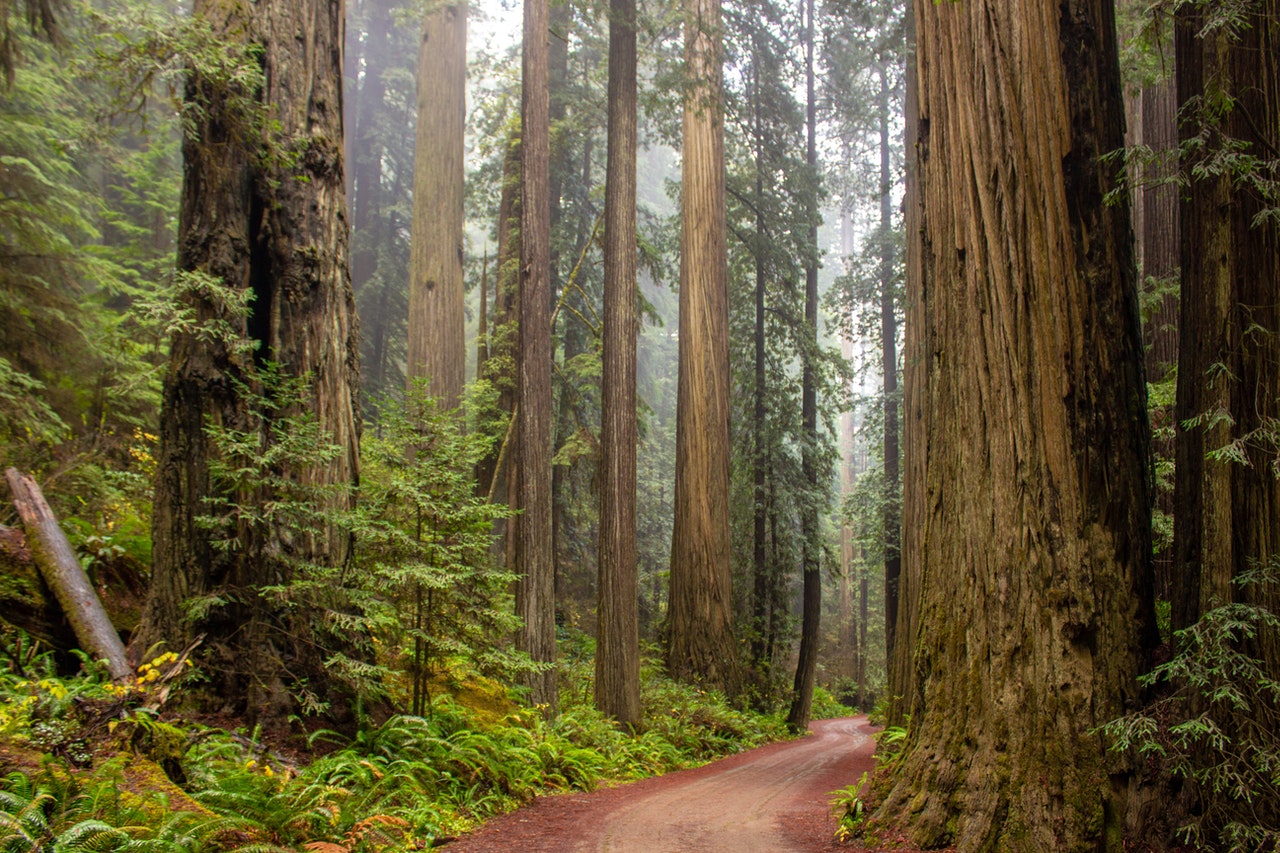
Photo by Mike Krejci from Pexels
As I got older, moved around for education, jobs, and family, I continued to hike and spend as much time outside as I could. I did not really know anything about the environment or ecology, only that I loved being in nature, and especially in forests.
When my husband and I bought our first (and only!) house, we were thrilled that it was directly next to town conservation land, with trails, vernal pools, and an abundance of wildlife. We quickly became accustomed to walking in the forest every day, and basically considered it “our forest.” Here are a few pictures from “our forest.”
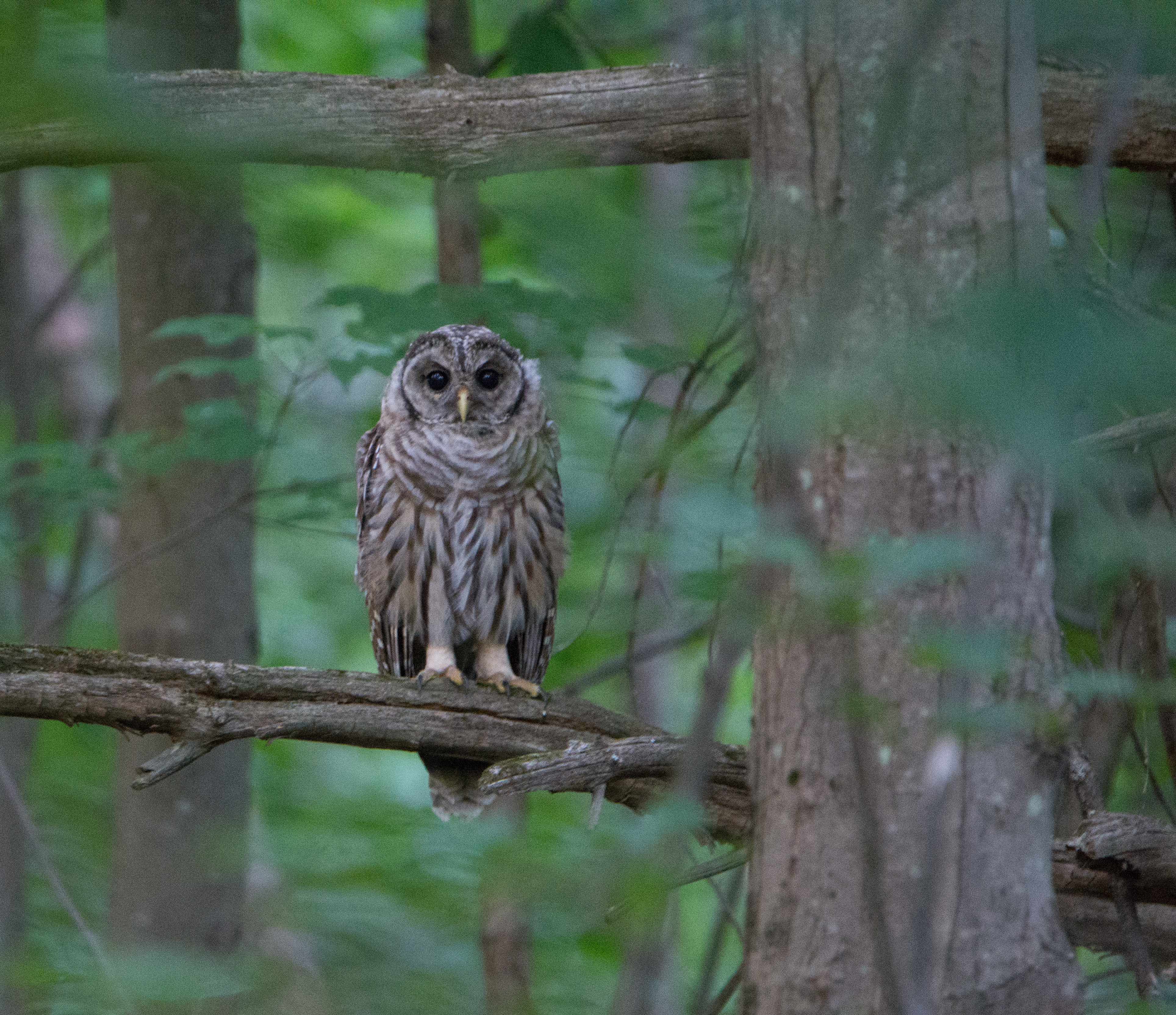
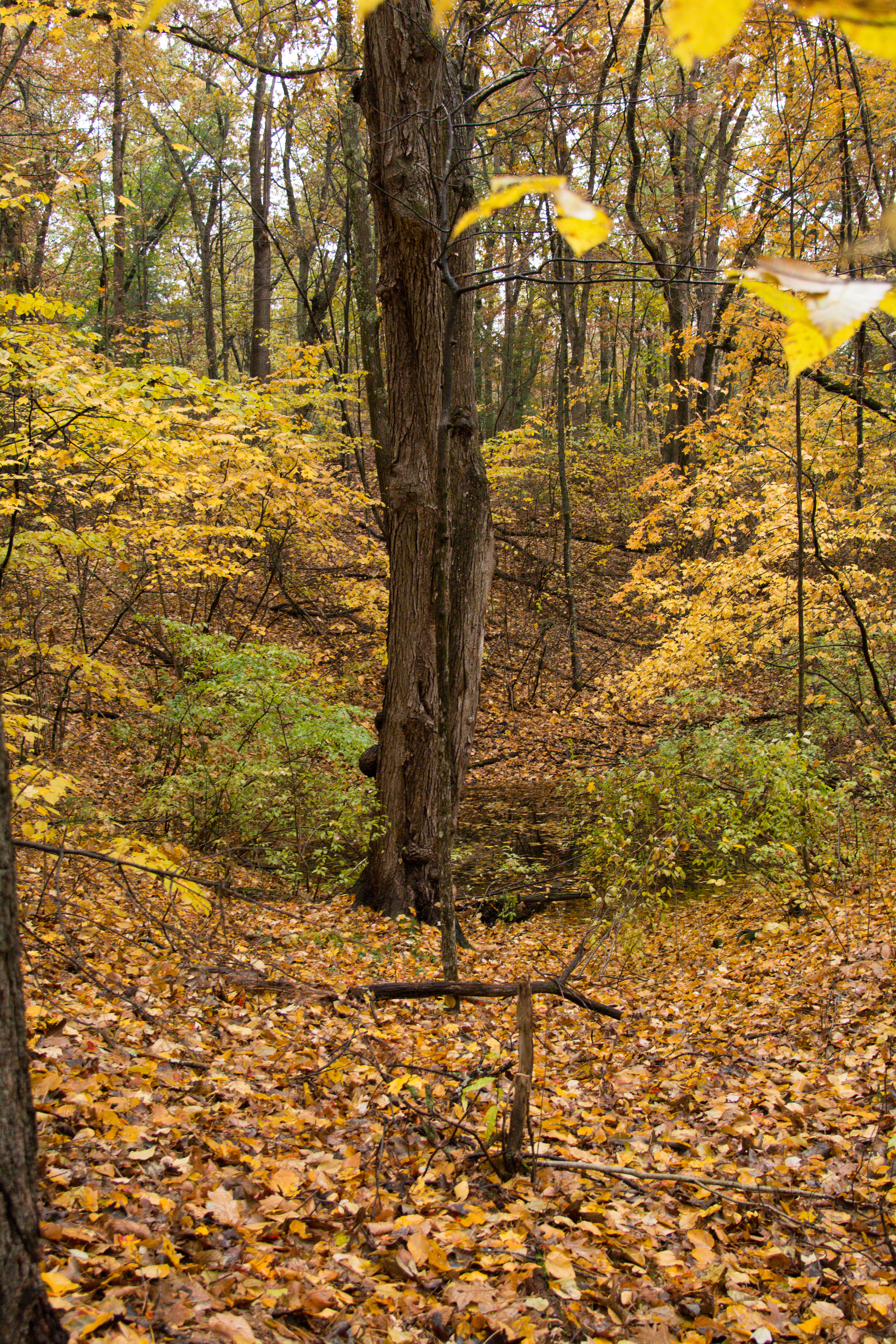
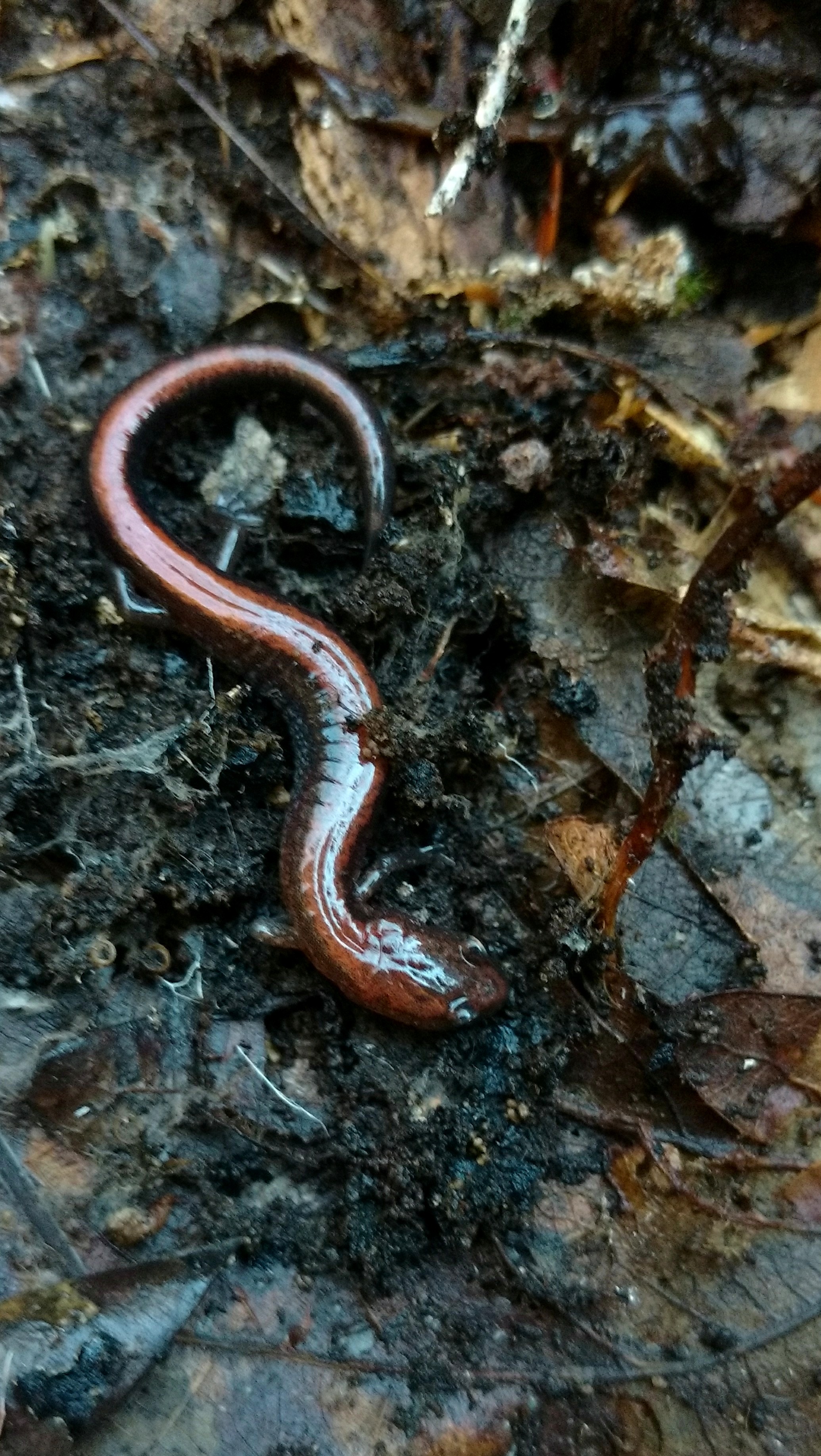
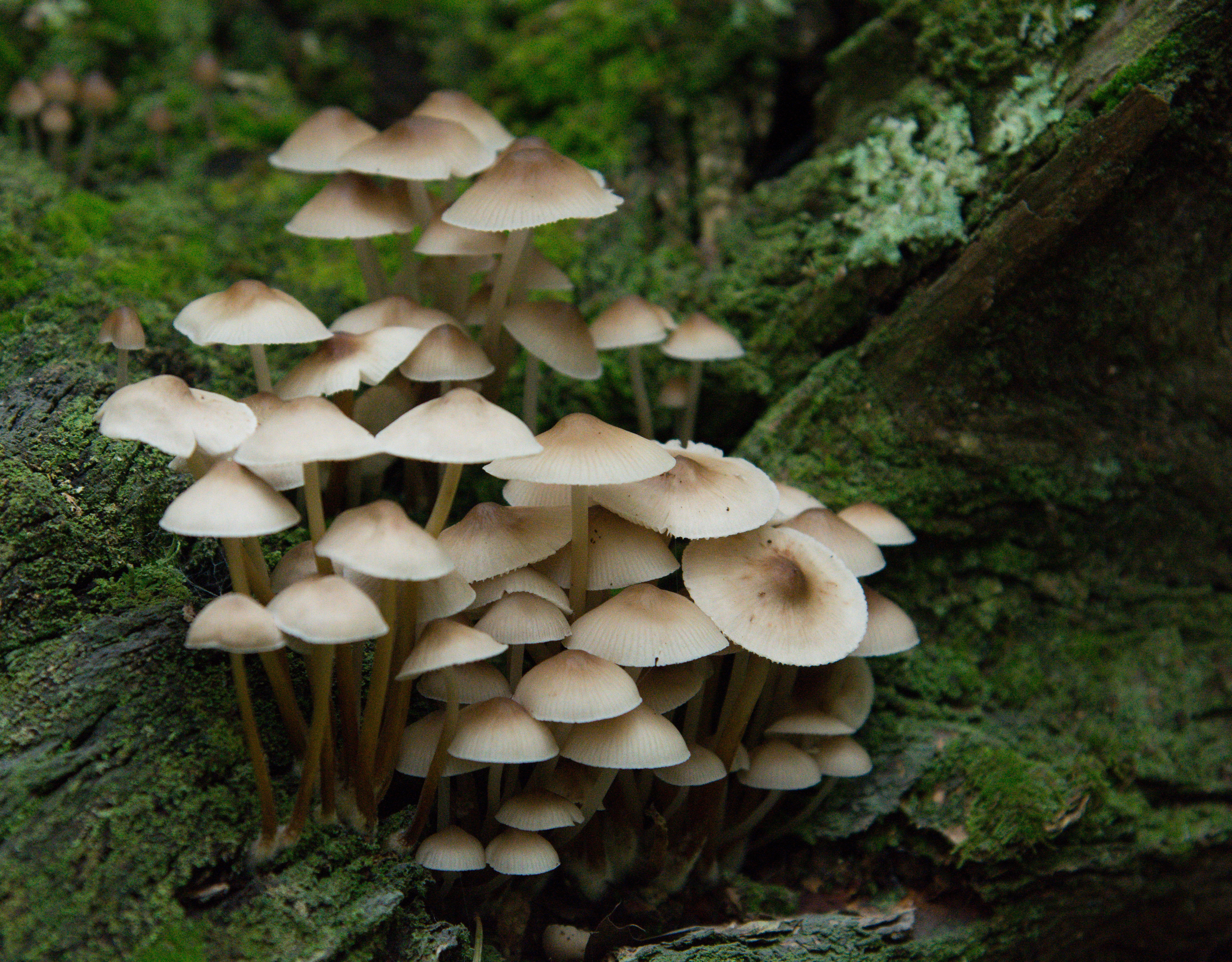
One day, we were out walking and noticed some curious blue rings painted on a lot of the trees.
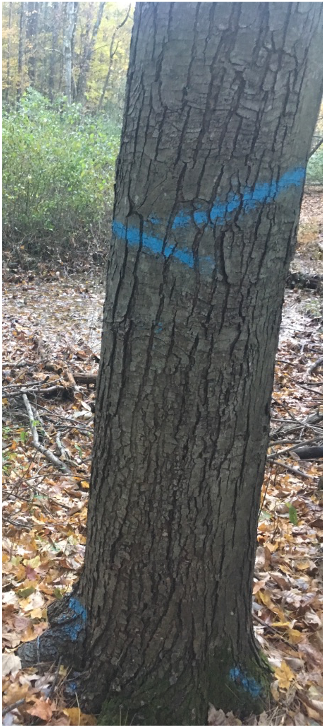
We had no idea what that meant – was this a weird art project? Or a high school prank? Who on earth would go around painting blue circles on trees???
Several weeks later, we received a flyer in our mailbox from a concerned neighbor notifying us that these circles were essentially bull’s eyes – our trees were being cut! The town had already cut one other forest, and ours was slated to be next. So, we went to see the forest that had been cut, and this is what it looked like:
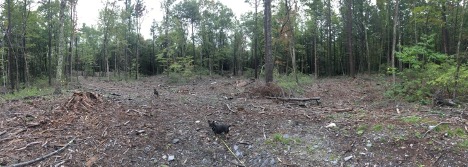
As you can see, this was not a “clear cut,” but rather, a “thinning.” Nevertheless, it was impossible to walk in, as there was slash everywhere, deep gouges in the soil from the heavy equipment, and a feeling of death and destruction. Plus, it was plain ugly. (Notice the sign that says, “Conservation Land.”)
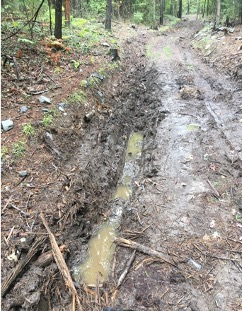
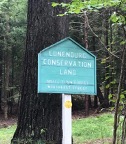
Surely, this had been a mistake. We would just go to our local Conservation Commission and complain, and they would be outraged! But “No,” they claimed, “we meant to do this – this is Forest Management, and it is good for the forest! This will promote ‘early successional habitat’ and biodiversity!” and “This is an overstocked, even-aged forest – we need to clear some of the bigger trees so that there is age-diversity,” and “we need to let more light in so that the smaller trees can grow bigger” and “this is all based on science!”
The subtext of these reasons was that they made some money in order to do ‘trail improvement’! Here is what they made money on:
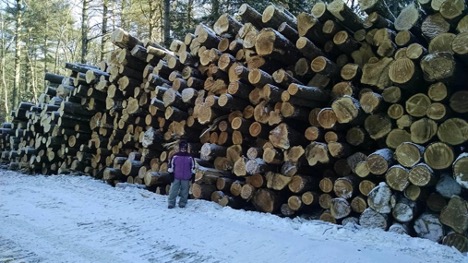
“This is tree farming. This is timber harvesting…it’s your classic example. In terms of the quality of work done there, it is a good harvest, and that is what I would hope would be done at the [next] parcel as well.” (Forester at Conservation Commission meeting, September 19, 2018)
Confused, I went to the Massachusetts Department of Conservation and Recreation (DCR), thinking they would understand that this was just wrong. WRONG!! Now, the fact that you are reading this blog right now means that you already know way more than I did back then, so you are probably laughing at my ignorance. I was truly astounded. These practices are happening throughout the state (and the country, and the world!). And not only on municipal lands, but in state forests, federal forests, and private lands as well. Everywhere I turned, it seemed like the very people who were supposed to protect forests, the environment and biodiversity were against it! I even went to the Attorney General and was told, no, they are on the side of the state.
So, a small group of local towns people organized, got signatures, and expressed our outrage to local officials. For now, I am happy to say, there is a moratorium on cutting town forests (although the Conservation Commission continues to cut on conservation land that is not heavily used for recreation – still in the name of promoting biodiversity, such as bird habitats). And they have made it clear that cutting town forests is not off the table. We continue to be diligent in following Conservation Commission meetings and are ready to take action should this come up again.
But that has not been the end of it for me. In fact, it was just the beginning. I began to wonder, what kind of “science” justifies cutting forests for biodiversity? Or is that just a ruse for capital gains? What is the contemporary science on NOT cutting, not only for protecting wildlife and biodiversity but given our current knowledge of climate change and the role of forests in sequestering carbon? And what is with BIOMASS??? How did this get to be classified as “clean energy” and “carbon neutral”? And how does cutting down forests to burn in large energy plants impact communities? Particularly low-income communities and communities of color? How does proforestation (leaving forests untouched) promote biodiversity, climate resilience, public health and so much more?
Further, how does proforestation relate to issues of equity and resilience in an era of increasing attention to systemic racism and inequality? Environmental justice communities are particularly hard hit by commercial logging in the name of promoting forest health and biodiversity. They not only lose accessible green space, they must deal toxins released from nearby biomass plants. Because of my background in public health, I am committed to bringing people together while honoring the richness, intelligence, and leadership that each individual and each community bring to the table. Climate change and species extinction affect everyone and therefore everyone deserves not only to be heard, but to be involved in solutions.
At the same time, it is important to remember that many people’s livelihoods are rooted in forestry and many hold strong beliefs that logging, when done “sustainably,” is good for forests. We must listen carefully to those whose lives will be negatively impacted by changes in forestry and environmental practices and work to attain practical, equitable solutions. In all cases, it is important to have honest, respectful conversations, even if we ultimately don’t agree.
So where do we go?
Again, I am not an expert, but for the past three years I have submerged myself in this subject and learned about forests and in the challenges we face to protect them. I hope that you will join me to develop a meaningful dialogue and work plan that will empower us to safeguard Massachusetts forests from destructive practices, and promote climate, environmental and social justice. There is much to do, including public education and engagement, developing an advocacy strategy to promote proforestation, supporting local communities in forest protection, and collaborating with like-minded organizations. Whether you have vast experience and knowledge in this area or are somewhat new but care deeply, there can be a meaningful role for you in contributing to this larger effort through the Sierra Club Massachusetts Chapter.
Our mission
The purpose of this team is to protect forests from human interference throughout Massachusetts to maximize carbon sequestration, promote biodiversity and optimize human health. We do this through raising public awareness and advocating for public policies that promote forest protection on local and state levels, using a lens of environmental and social justice as a guide.